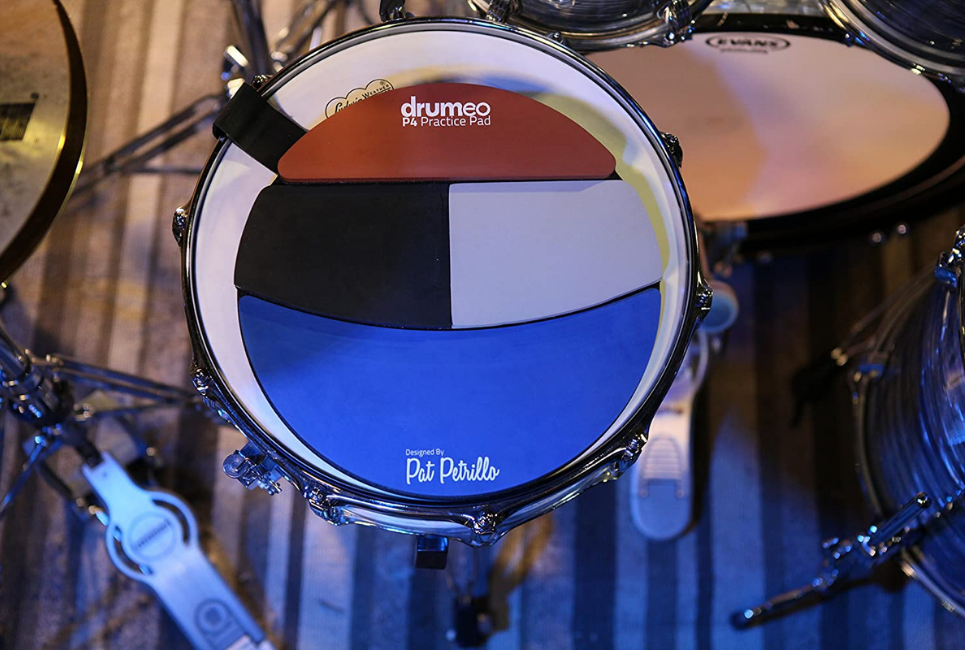I’ve found that looking for the best practice pads for drumming practice isn’t the easiest thing to do. Most practice pads look similar, and they all sound the same when you watch YouTube videos of them. It makes sense just to buy whatever you can get your hands on, right? Wrong.
All practice pads have minor differences that are major once you realize how they may affect you. So, I’m going to help you in your search and recommend six pads that I know are top-quality options. I’ll explain who they’ll be good for as well.
Bottom Line Up Front
A practice pad is a small tool that is designed to let you practice drumming patterns and techniques without making a loud noise. They’re generally made of rubber, but some are made with other innovative materials.
They have varying benefits, depending on how they’re made. When buying a practice pad, you should look for what benefits it offers to make sure that it’s the best option for your specific situation. Here are my top picks:
My Top Picks at a Glance
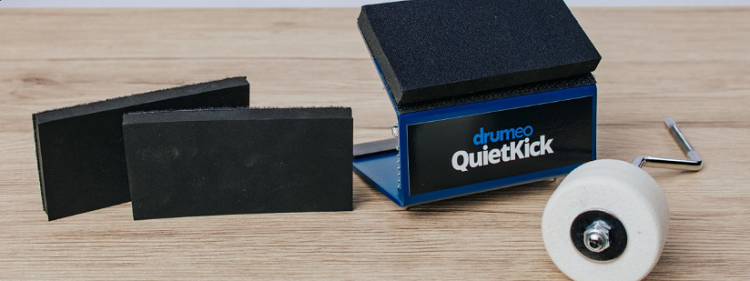
- Drumeo P4 – Best practice pad with multiple layers on the surface.
- Evans Realfeel 2-sided Pad – Most affordable large practice pad.
- Remo Tunable Pad – Allows you to adjust tension.
- Gibraltar SC-PPP Pocket Pad – Best portable pad with a unique design.
- Zildjian Reflexx Conditioning Pad – Best resistance pad.
- Drumeo QuietKick – Best practice pads for bass drum pedals.
Practice Pad Advice
Should All Drummers Use Practice Pads?
While I always had practice pads lying around my house through the years, I never played on them as much as I should have. It was only when I heard Mike Johnston explaining how valuable pads are that I understood their benefit.
Practice pads are incredibly important tools to utilize. I always detested playing on the pad as it wasn’t as thrilling as playing on a full set of drums. Once I started working on patterns and techniques on the pad instead of random note playing, the results on the kit were dramatic.
So, I’d say all drummers should use pads. They shouldn’t be seen as something that you play when you aren’t able to play the drums, but rather a tool to supplement your drumming skills. They allow you to sit and focus on specific techniques and patterns without having the distraction of several drums around you.
You should also take a pad with you when you play gigs. Warming up is severely underrated, especially with drummers I know that only play gigs as a hobby. Pulling out a pad and playing some rudiments before the show will help you feel relaxed and loose when you finally get up to the stage.
It’s Good to Have Multiple Pads
All practice pads are made slightly differently. The two main differences between all of them are pad material and size. The type of pad material will determine how the pad feels to play, while the size will determine the weight and portability.
To get the most out of practice pads, I’d suggest having more than one. I leave a practice pad on my coffee table. Having it there reminds me to do a bit of practicing when I have some time in the lounge. It’s quite therapeutic to play rudiments while watching a movie.
I also leave a small practice pad inside my drumstick bag. It’s always with me at gigs, allowing me to warm up when I don’t have access to the drum kit on stage yet. If I used the same pad on my coffee table to take to gigs, it would be too large to fit in my stick bag.
Some pads have more rebound than others, and I’d say it’s incredibly valuable to have pads with varying levels of it. If you want to work on your finger technique, it’s ideal to have a bit of rebound. To work on wrist strength, having less rebound is preferable.
Practice Pad Workouts
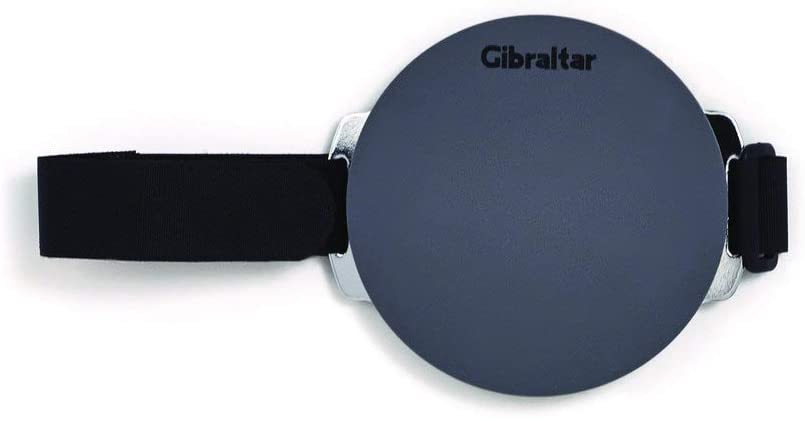
If you’re wondering what you can do with a pad, let me give you a few ideas. I love to structure practice pad workouts. I approach them the same way I approach gym workouts, giving me motivation to progressively improve over time.
Mastering a practice pad workout is all about improving timing, feel, speed, and technique. Those are the four things that I always think about, and I know I’ve nailed the workout if I feel as though I’ve performed those well.
A good workout will look something like this:
- Single stroke roll with only wrist movements – 5 minutes
- Single stroke roll with only finger movements – 5 minutes
- Single stroke roll alternating between eighth and sixteenth notes – 5 minutes
- Single stroke roll played at a max comfortable speed – 5 minutes
Your singles will improve drastically after doing this workout a few times, and you can do it while watching your favorite episodes from Friends. How fun!
Use Fresh Drumsticks
My last bit of advice about practice pads is to use a fresh pair of drumsticks. I’ve learned this the hard way over the years. When using a pair of drumsticks to play a drum kit, the wood on the sticks starts to chip away and make the floor a bit dirty. If you use those same sticks to play on a pad, the stick shavings will continue to fall all over the place.
After my wife made me vacuum the floor after every pad workout, I decided to buy a separate pair of sticks to use solely for pad practicing. You’re not hitting any metal when playing a pad, so the sticks won’t start chipping away. They’ll also last a lot longer when only used for the pad, so it’s a good investment!
Selection Criteria
Now that you’ve understood the importance of pads and how valuable they are, let’s move on to some of the best ones available to buy. All the pads I’ve selected below have varying benefits. None of them are the same, so be sure to carefully read what each one offers.
There are hundreds of drum pads available on the market, but these are the ones that have stood out to me over the years. In a perfect world, I’d suggest owning all of them to benefit from all their offerings. More realistically, you should aim to get one or two of them.
Best Practice Pads for Drummers
Drumeo P4
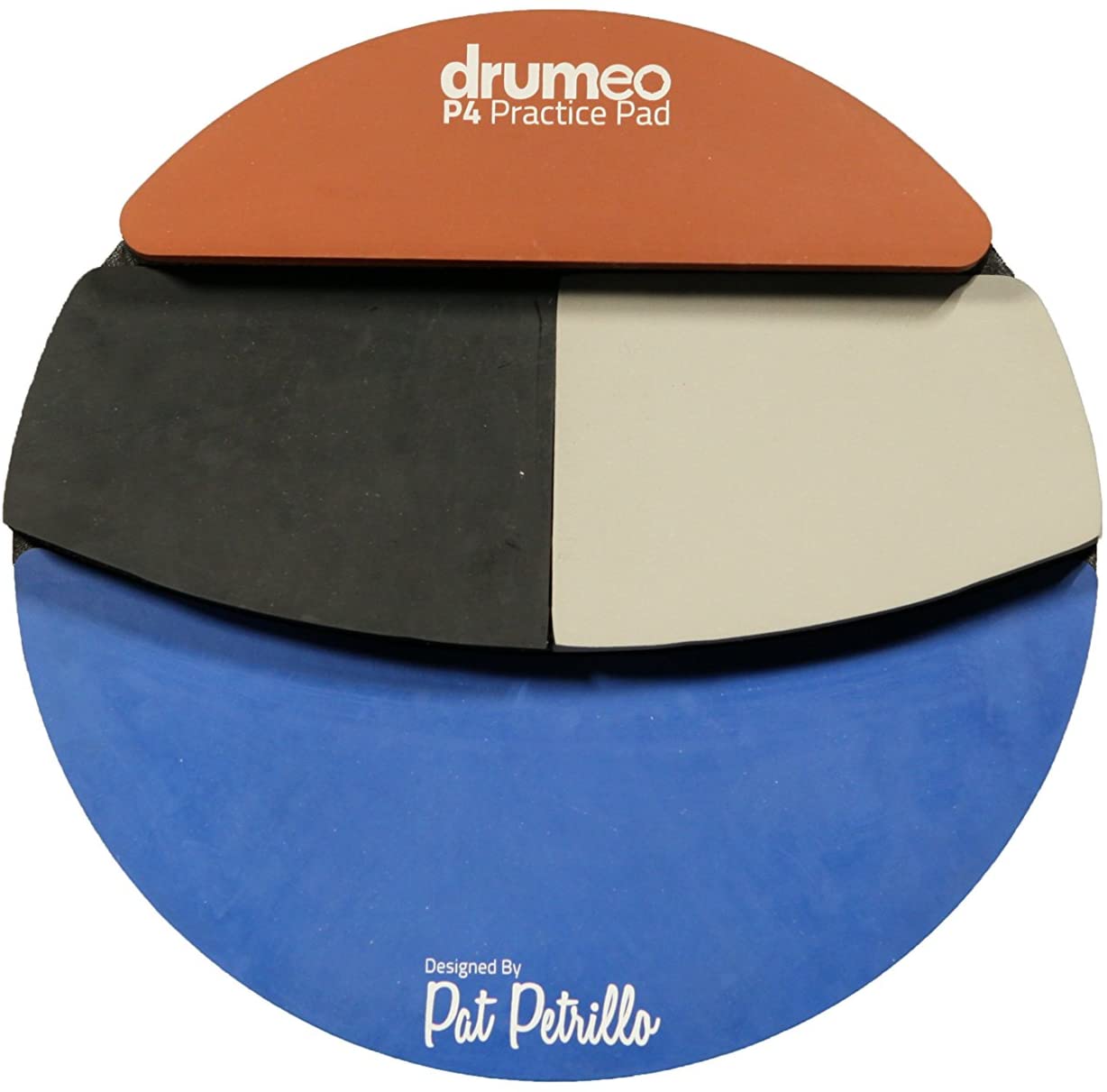
The Drumeo P4 Pad is one of my favorites, so it’s here as my first suggestion. You’ll immediately notice that this pad looks quite different from all the others. Its biggest selling point is that it has multiple surfaces to play on, and all of them are made from different materials.
The largest section of the pad is made from gum rubber, and it feels similar to most other pads. You get two sections above that are made from softer rubbers, emulating the feel of rack toms and floor toms. Above those, you get a hard rubber surface that feels similar to how a hi-hat would feel.
The idea with this pad is that it takes all the playing surfaces of a full drum kit and condenses them into one small practicing machine. The sections are raised in height as you move up the pad, which adds an extra layer of texture to the pad that I love. It’s 12”, making it ideal for playing on your snare drum as well.
This is one of the heavier pads on this list, so it’s not the type of practice pad that you would take to gigs with you. However, it’s a powerhouse practicing tool for your home. It’s also one of the more expensive pads that I’m going to recommend, but the value-for-money you get with it is excellent.
Pros
- Multiple playing surfaces that resemble drums and cymbals
- Very heavy and durable
- 12” size is fantastic
Cons
- Quite pricey
- Not great for traveling
Evans Realfeel 2-Sided

The Evans Realfeel Pad is one of the classic options available. Countless drummers have been using this pad for years, and its reliability is incredible. I’ve listed it here as I’d say it’s the most affordable high-quality pad that is 12”.
It has two sides to it. On the one side, you get a natural gum-rubber surface that emulates the responsiveness of a drumhead. On the other side, you get a harder rubber material that is louder and gives you more rebound.
When I had this pad, I found myself mostly using the gum-rubber side, but I can see how having more rebound will help snare drummers and percussionists who play on tightly tuned drums.
I found the rubbery smell to be a bit strong with this pad. That’s a small tidbit that may stop some people from buying it. However, the value of this pad shouldn’t be looked past because of this.
Pros
- One of the most affordable 12” pads
- Has two playing sides
- Great option for percussionists and snare drummers
Cons
- Has a strong rubbery smell
Remo Tunable

Remo sells a few of these Tunable Pads in different sizes. I love the idea behind these. They have screws on the edge that allow you to adjust the tension of the surface that you play on. You get to alter how this pad feels the same way you would with a standard drum.
The outer edge of the pad also allows you to play rimshots as you would on a snare drum. Overall, it’s a solid pad if you want to dial in your own tension setting.
Just note that this is one of the loudest practice pads on this list. If you want a pad for quiet practicing, I suggest not getting this one.
Pros
- You can change the tension of the playing surface
- Allows you to play rimshots
- Black and red color option looks epic
Cons
- Not as quiet as other practice pads
Gibraltar SC-PPP Pocket Pad
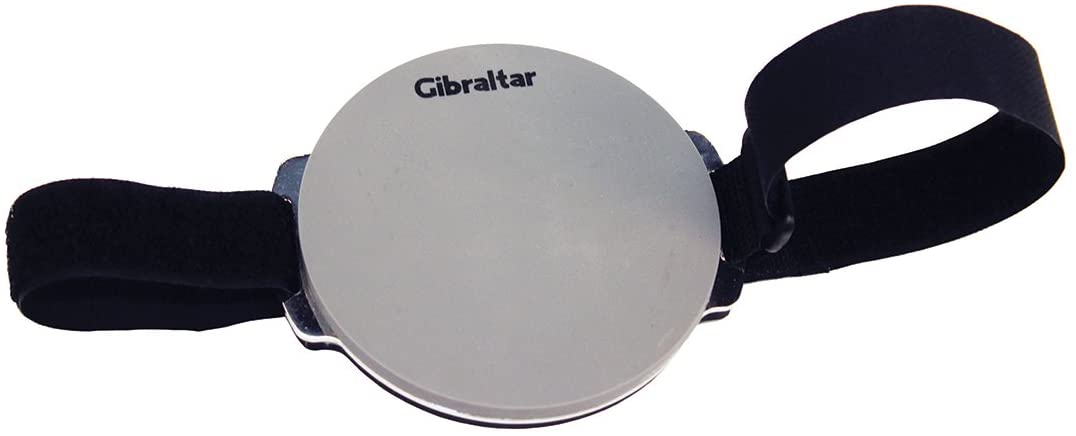
The Gibraltar SC-PPP is one of the more unique pads you’ll see being sold. It’s called a pocket practice pad, as it’s only 4” and can fit snugly into your pocket. The idea behind this pad is that you strap it to your knee and play it while sitting down.
I’ve seen a few companies attempt to pull off this design, but I think Gibraltar has done it the best. This is the most ideal pad on this list for taking with you to gigs. You can sit anywhere before a show and warm up with it. Most drummers tap their sticks on their legs anyway, so why not do it on a proper pad?
The other benefit this pad has is that it boosts your accuracy. With such a small playing surface, you have to be sure that you’re actually hitting it. The accuracy developed here will transfer well over to your acoustic drums.
I wouldn’t suggest using this as your main practice pad, though. It’s too small for all applications.
Pros
- Helps improve accuracy
- Extremely portable due to small size
- Very affordable
Cons
- Not ideal to use as your main practice pad
Zildjian Reflexx Conditioning Pad
The Reflexx Pads are often seen as the “elite” pads in the drumming community. I’d say that the biggest reason for this is that the Reflexx brand doesn’t offer these out in abundance.
They’ll release a few hundred at a time. When those are sold out, you have to wait until the next content drop. Zildjian recently joined with the brand to boost their sales and exposure, but the pads are still quite hard to find!
My favorite thing about the Reflexx pads is the resistance surface. This surface has almost no rebound, and it’s very quiet. It’s fantastic for working on wrist strength through resistance training. You’re also offered a more natural playing surface on the other side, so the pad gives you everything you need for great practice sessions.
With the demand for these pads being so high, they’re quite expensive. However, you’ll realize why the price is high once you have the chance to play a Reflexx pad. They’re incredible.
Pros
- Excellent pad for resistance training
- Hard to get hold of, making the exclusivity of owning a Reflexx pad quite attractive
- Simple yet beautiful design
Cons
- Very expensive
Drumeo QuietKick

My last suggestion on this list is a practice pad for your foot. While it’s most important to practice with your hands, you shouldn’t neglect working on your bass drum foot when you’re away from the drum set.
There are so many practice pads for pedals out there, but I’ve never found any of them to feel as great as standard practice pads do. They’re either too wonky or too cumbersome. Here’s where the Drumeo QuietKick comes in.
It’s a simple metal frame that has three different playing surfaces to stick on. You get a bass drum beater that is angled to play with the frame. You need to take this beater and put it on a standard kick drum pedal. The frame even fits a double pedal if you want to get a second angled beater.
Drumeo recently released it, so there’s plenty of hype surrounding it. Since it’s new, I’d say the downside is that no one has tested it for a few months yet. However, it looks like an amazing tool!
Pros
- Sturdier than other bass drum practice pads
- Small and portable
- Offer three different playing surfaces
Cons
- Very new product, so its durability hasn’t been tested by the drumming community yet
FAQs
Answer: Practice pads for drumming come in all shapes and sizes, and the size you should get depends on what applications you’re going to use it for.
If you want to place it on top of your snare drum, I’d suggest getting one that is between 10” and 14”. It will fit quite snuggly on there, and playing it on the snare will give you the added response of snare wires.
If you want to simply place the pad on a coffee table when playing, you could get a smaller one that is more affordable. Some drummers love playing on small pads as it improves their accuracy.
Answer: No. You’ll need to play a full set of drums to learn how to play them properly. A practice pad is only a single surface, so you don’t get the benefit of moving your hands around and using all four limbs at one time. Practice pads also don’t resemble the feeling of cymbals.
However, you can improve your drumming skills quite a bit by only playing on a pad. You can work on things such as timing, accuracy, and rudiments. If you get a practice pad for your foot as well, then you can work on hand and foot combinations.
Answer: Yes. One of the most popular ones is the DW Practice Pad Set. It has four practice pads mounted to a stand to resemble the setup of a full kit. It also has a pad at the base for a kick drum pedal to attach to.
Tama also recently released a practice set called the Tama True Touch. It follows a similar idea, but the snare drum pad is a lot more innovative. It has a raised edge to allow rimshots, and it provides a bit of snare buzz to match the response of a snare drum.
Out of those two kits, I prefer the Tama option, but it’s a few hundred dollars more expensive.
Answer: While you can find several practice pads that cost about $10, you could practice on surfaces that are already around you, and that wouldn’t cost anything. Playing on pillows is a great way of doing resistance training with your sticks. They don’t have any rebound, helping you increase speed.
My favorite way of practicing when I don’t have a pad has always been to play on a carpet. I’ve found that living room rugs make great surfaces to hit sticks with. You need to make sure that you’re playing on a rug that won’t develop marks, though. Using a fresh pair of sticks is recommended.
Answer: Not quite. Electronic drum pads are mostly made from mesh heads, and these mesh heads are intended to resemble the feeling of acoustic drumheads. While some practice pads use mesh head material, I haven’t played on any that feel the same as electronic mesh pads.
If an electronic drum kit doesn’t have mesh pads, it will have ones made from rubber. These rubber pads have plenty of rebound, and this is more likely what you’ll find in most practice pads as well. The only electronic drum kits that have rubber pads are low-priced ones.
Conclusion
Thankfully, no practice pad costs more than $100. Even the most innovative ones have attainable prices. So, there’s nothing holding you back from getting a practice pad or two to boost your practicing schedule.
Make sure to understand the importance of working things out on the pad, and then you’ll be more excited to buy one. Check out all the pads I listed above and decide which one will be best for your current playing situation. If you love more than one of them, buy both! You can never have too many practice pads.
For more interesting reading on drum gear, check out the following articles:

